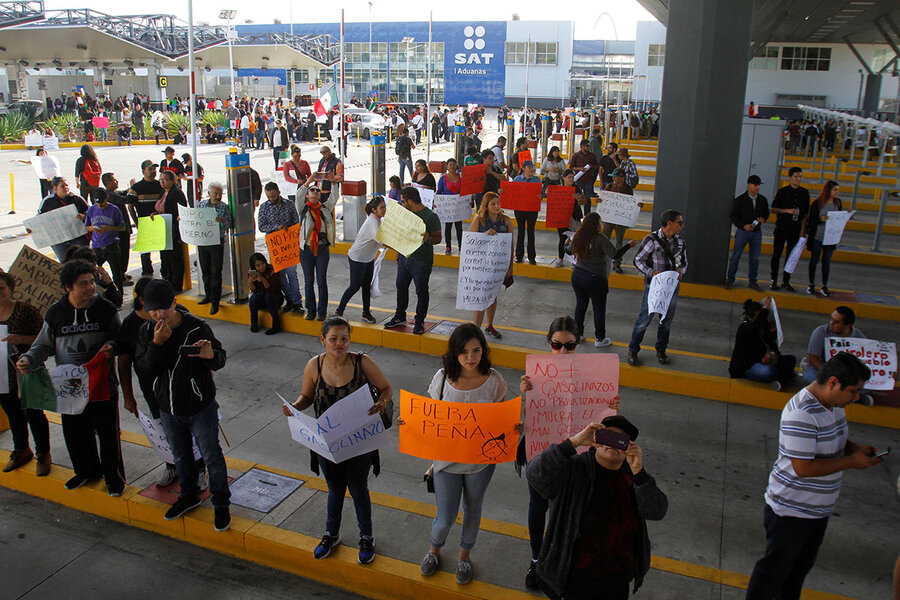Violence erupts at Mexican protest against gas price hikes
Loading...
Another demonstration in Mexico over fuel price increases turned violent Saturday when a lone protester drove a pickup straight into a line of riot police guarding a fuel distribution terminal, injuring seven officers.
The incident in Rosarito, near the California border town of Tijuana, followed the deaths of a police officer and a pedestrian in separate looting incidents last week that were tied to the fuel protests. According to Mexico’s Interior Department, more than 1,500 people have been detained for looting or disturbances since the protests began this month. It’s unclear how many have been charged.
The protests are in response to Mexico’s attempt to deregulate its gasoline prices for the first time since the government nationalized the industry in 1938. President Enrique Peña Nieto says the increase is necessary to provide more funds to help the poor. But drivers, protesters, and advocacy groups say the price increases will hurt the very people that Peña Nieto's government says it aims to help.
"One has to be sensitive to the daily needs of the people," the Mexican Council of Bishops said in a statement last week. "It is not right to impose laws without taking into account peoples' realities and their feelings."
The price increases, part of Mexico’s deregulation of the energy sector, took effect Jan. 1. The change boosted the price of gas about 20 percent. The average price for a liter of premium gasoline stood at 17.79 pesos (about 90 cents) last week. That makes four liters, or about a gallon, cost almost as much as Mexico’s just-raised minimum wage for a day’s work – 80 pesos (about $4), as the Associated Press reported.
The increase led to nervousness, protests, and looting across the country. Ahead of the price hikes, Mexico suffered from frustrating gasoline shortages. Lines to fill up vehicles lasted for hours, and rumors circulated that gas station owners were purportedly hoarding fuel ahead of the price hikes in an attempt to turn a bigger profit.
Once the price increases took effect, protests broke out in states across the country, sometimes turning violent. Blockades and looting also occurred, which the country’s business chambers said forced many stores and businesses to close and threatened supplies of basic goods and fuel.
But Peña Nieto said the price increases under the scheme to do away with fuel subsidies would continue, in order to bring them in line with international prices.
"I know that allowing gasoline to rise to its international price is a difficult change, but as president, my job is to precisely make difficult decisions now, in order to avoid worse consequences in the future," Peña Nieto said in a televised address last week. "Keeping gas prices artificially low would mean taking money away from the poorest Mexicans, and giving it to those who have the most."
Analysts say Mexico’s neglect of its fuel infrastructure is also catching up with the country.
"We are up against a total collapse of the refining system of Pemex," Jorge Piñon, an energy expert at the University of Texas, Austin, told the Associated Press, about the state-run oil company.
Mr. Piñon said the country is importing more gasoline because Pemex lacks adequate distribution and storage capacity.
The price deregulations under Peña Nieto are part of a broader energy reform passed under his government two years ago. Under the scheme, the government will allow some private investment and end the state’s monopoly over the energy sector.
In 2016, the first gas stations not run by Pemex began to operate across the country, but are still far outnumbered by Pemex stations. In a second phase in 2017, other companies will be allowed to import and distribute gas.
This report includes material from the Associated Press and Reuters.







